The background to the war in Ukraine
28 februari 2024 | John Laughland
The second anniversary of the Russian invasion of Ukraine, which began on 24 February 2022, has led to an outpouring of nauseating propaganda from Western governments and the European Commission, accompanied by various symbolic photoshoots.
The line is peddled vigorously that the Russian invasion was “illegal and unprovoked” and that Ukraine is defending Europe and its values. Neither of these claims is true and yet the cult of anniversaries is used to pretend that they are.
Everyone knows that the Ukraine conflict did not start in 2022 but instead in 2014 at least. Even Western countries admit this. The treaty Britain signed with Ukraine on 12 January 2024 refers in the opening words to “Russia’s unprovoked attacks on Ukraine since 2014”. The letter sent by the Dutch Foreign and Defence Ministers to Parliament on 23 February, outlining the very similar security agreement to be signed by the Netherlands and Ukraine, says that “Russia's war of aggression has been going on for more than 10 years.”

These are allusions to the events of February 2014, when a violent revolution overthrew the legal and universally recognised president, Viktor Yanukovich. He was forced to flee by a Western-backed mob because, the previous November, he had refused to sign an association agreement with the EU – the very association agreement Forum for Democracy opposed, and which Dutch voters rejected, in the referendum of 2016. He had also reaffirmed his country’s commitment to neutrality, i.e. not to join NATO.
Yanukovich’s overthrow tore up every rule in Ukraine’s constitution concerning the removal of an elected president from office. Yet Western leaders hailed it as an outbreak of democracy because it meant that Ukraine henceforth would have a pro-Western orientation. So much for the EU’s pretended support for the rule of law and the “rules-based international order”.
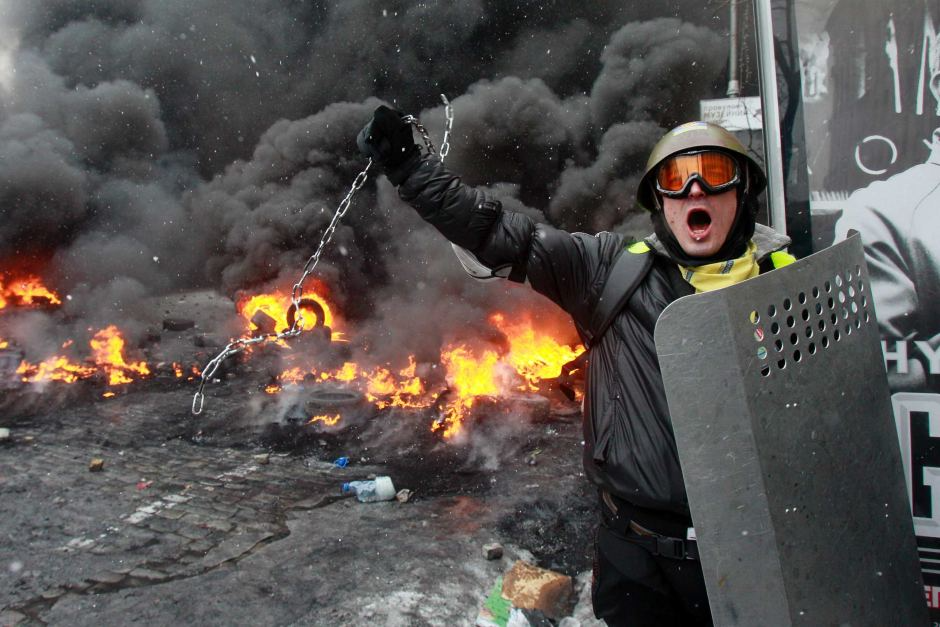
The decision to engineer regime change was taken by the Americans. No sooner had Yanukovich reneged on his signature in late November 2013 than the hundreds of Ukrainian NGOs funded by the National Endowment of Democracy, George Soros’ Open Society Foundation and the EU were activated. Their members and friends took to the streets. Maidan square in central Kiev soon became controlled by violent and sinister armed thugs who attacked the police.
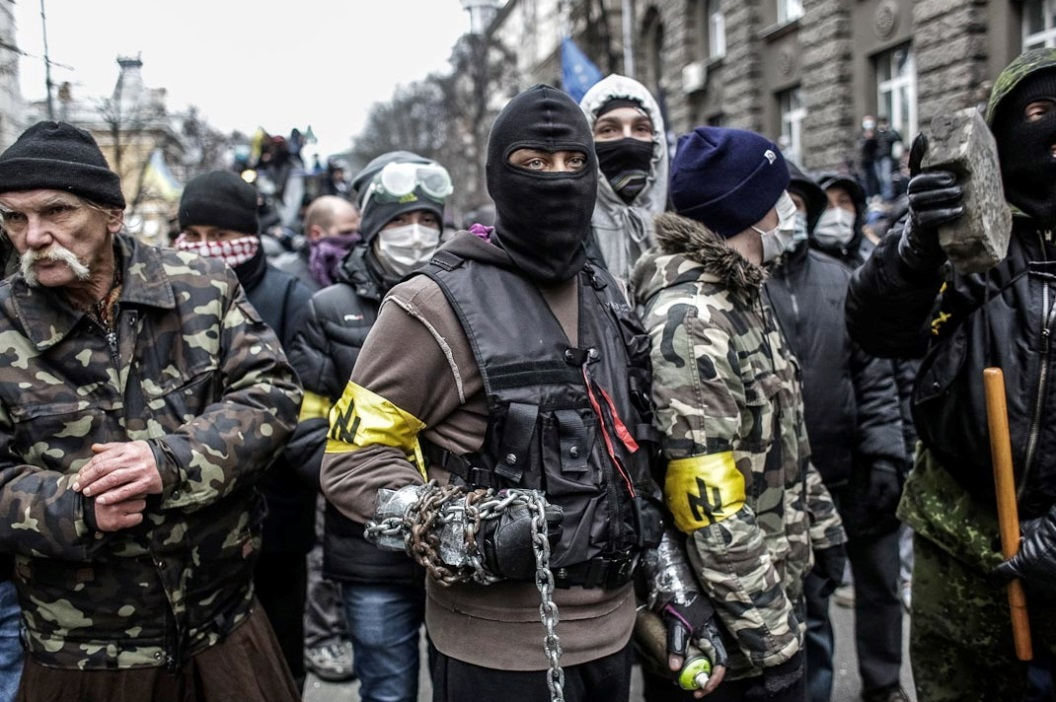
We know that regime change was the plan because on 1 February 2014, the then Secretary of State, John Kerry, and the then Assistant Secretary of State, Victoria Nuland, met the then Ukrainian opposition in Munich. It was a small meeting, the Americans on one side of the table and Petro Poroshenko, Arseniy Yatsenyuk and Vitaliy Klitschko on the other. Poroshenko became president after the coup, Yatsenyuk prime minister and Klitschko Mayor of Kiev.
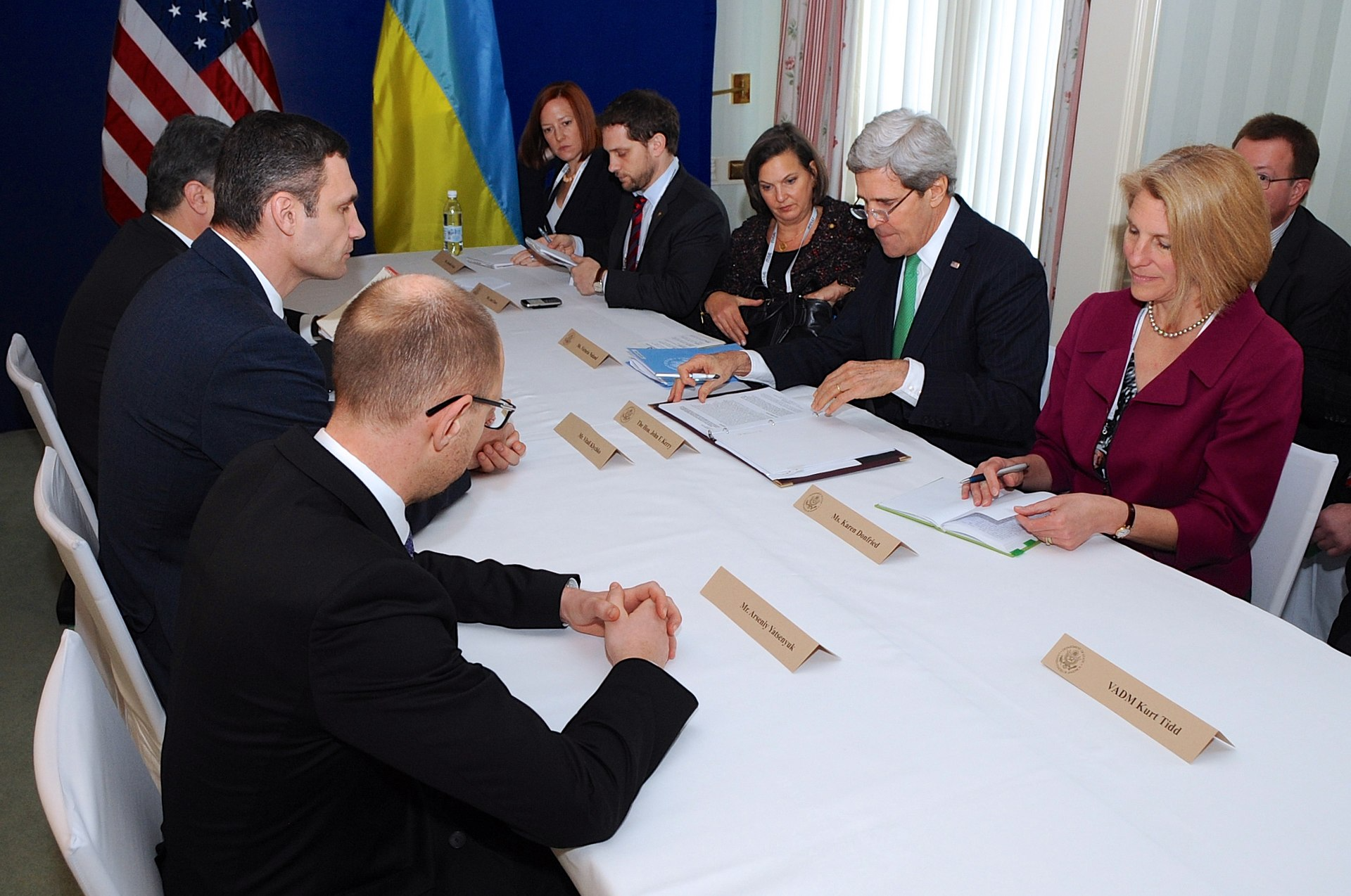
These people were hand-picked by Nuland. In a telephone conversation she had on 7 February with the US ambassador in Kiev, Geoffrey Pyatt, which was later leaked and which can be listened to on Youtube, she decided who would be in the government and who would not. Yes to Poroshenko and “Yats”, no to “Klitsch”. She concluded her discussion with her now notorious dismissal of the role she expected the Europeans to play. “Fuck the EU,” she said.
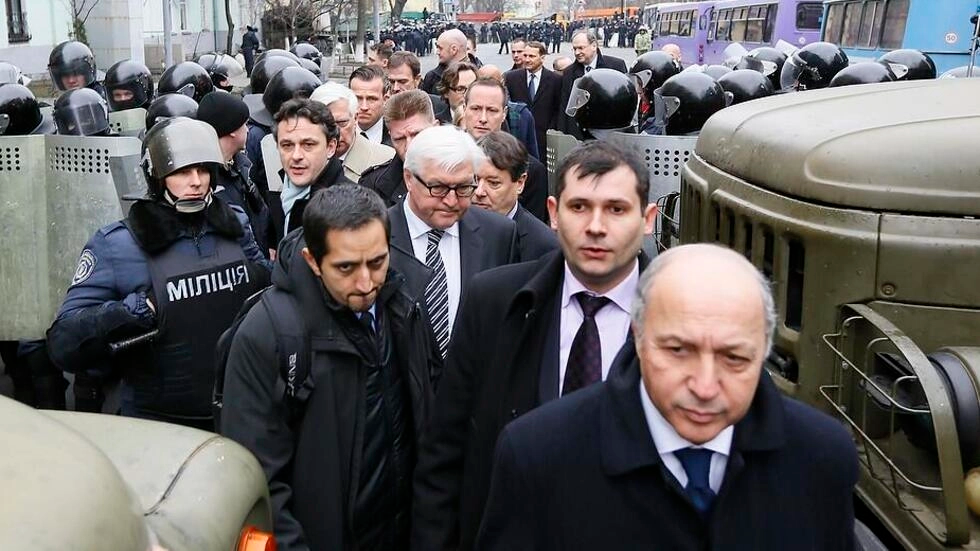
Actually, Europe did have a role to play. Its role was to trick Yanukovich into signing his own political death warrant. On 20 February 2014, the day before the coup, the foreign ministers of France, Germany and Poland went to Kiev and negotiated an agreement between the government and the opposition. The deal provided for the withdrawal of the police from Maidan square and early elections. It was signed on 21 February. Yanukovich withdrew his police, who promptly told him that there would be no one left to protect him. He fled and was illegally removed from office the next day. The bit about the early elections, in which he would have been a candidate, was quickly forgotten about.
The dénouement started on 20 February 2014 when a hundred people were shot dead on Maidan square in central Kiev. The EU and other produced propaganda videos about this in 2024 to commemorate the tenth anniversary of the events. But we have known for many years, and it was confirmed by a Ukrainian court last October, that the shots were fired from buildings controlled by the pro-Western forces on Maidan square.

In other words, the EU- and NATO-backed revolutionaries murdered their own people in order to escalate the already poisonous situation and provoke the final crisis. The Ukrainian court’s conclusions are “categorical”: they prove that the Maidan demonstrations were not peaceful, as the West pretends, and that the Yanukovich regime was not murderous, as the West pretends. It was the other way around. Yet Ursula von der Leyen continues to peddle the lie.
Brussels has actually known the truth about the Maidan snipers for eight years. On 5 March 2014, the Estonian Foreign Minister told the EU High Representative for foreign policy that the shots had been fired from buildings controlled by the Maidan militias and not by the Ukrainian police. But the truth was quickly suppressed. There is a simple explanation. Regime change, by violence if necessary, was already the settled policy of the United States at least by early February 2014: the Europeans merely provided the cover.
Yet Europe’s role as polite cover for the American’s murderous geo-political zero-sum game ran even deeper than what Europeans did in 2014. The idea of ripping Ukraine out of the “permanent neutrality” it had proclaimed together with its state sovereignty in 1990, and putting it instead into the Western sphere of influence, was formalised in 2008 when NATO decided to invite Ukraine and Georgia to become members.
In parallel, in 2009 the EU established its Eastern Partnership programme, association with the EU being the pathway to full Euro-Atlantic integration including into NATO. The Association Agreement which Ukraine eventually signed in 2017 requires “convergence on foreign and security matters with the aim of Ukraine's ever-deeper involvement in the European security area”, i.e. integration into NATO via the EU’s Common Foreign and Security Policy which, by EU law, must be compatible with that of NATO (Article 42 and Protocol 11 of the Treaty on European Union).
Two other crucial events occurred in 2008 which were to prove fateful and decisive for the future conflict in Ukraine. The first was in February 2008, when the US and the EU encouraged Kosovo to declare its independence from Serbia. This was an absolutely blatant breach of customary international law and of UN Security Council Resolution 1244 (1999) which had reaffirmed Kosovo’s status as a province of the Federal Republic of Yugoslavia of which Serbia is the successor state.
When in 2014 Russia annexed Crimea, the West wet its knickers and wailed that this was “illegal” and based on an “illegal referendum”. Yet Kosovo provided the precedent – and there was not even a referendum there but instead only a decision by the Kosovo puppet parliament. Indeed, the so-called declaration of “independence” was in fact a declaration of dependence on the EU and NATO which remains a Western protectorate to this day with a huge US base (the largest in the Balkans) on its territory.
The second event was in August 2008 when Georgia, which had just been invited to join NATO, launched an unprovoked attack on its secessionist territory, South Ossetia. Ossetia and Abkhazia had fought a war with Georgia in 1991-1993 (an American friend of mine was killed in it) and had been independent of Tbilisi since then. Russia responded by sending troops into South Ossetia and even Georgia proper to repel the Georgians. The fighting was over within a fortnight. There is no doubt that Georgia attacked its own people and it is highly likely that Mikheïl Saaksahvili, the Georgian president, was tacitly encouraged by the Americans. It became clear that the West’s invitation to Georgia and Ukraine to join NATO would be the prelude for anti-Russian attacks.
So the events of 2022 have their roots in 2014 and the events of 2014 have their roots in 2008. One man links these events: Radoslaw Sikorski, the current foreign minister of Poland. A man who has spent his life fighting Russia – he even went to Soviet-occupied Afghanistan as a young man - Sikorski initiated the Eastern Partnership in 2008 and was one of the three EU foreign ministers who laid a trap for Yanukovich in 2014 by persuading him to withdraw his own police force.
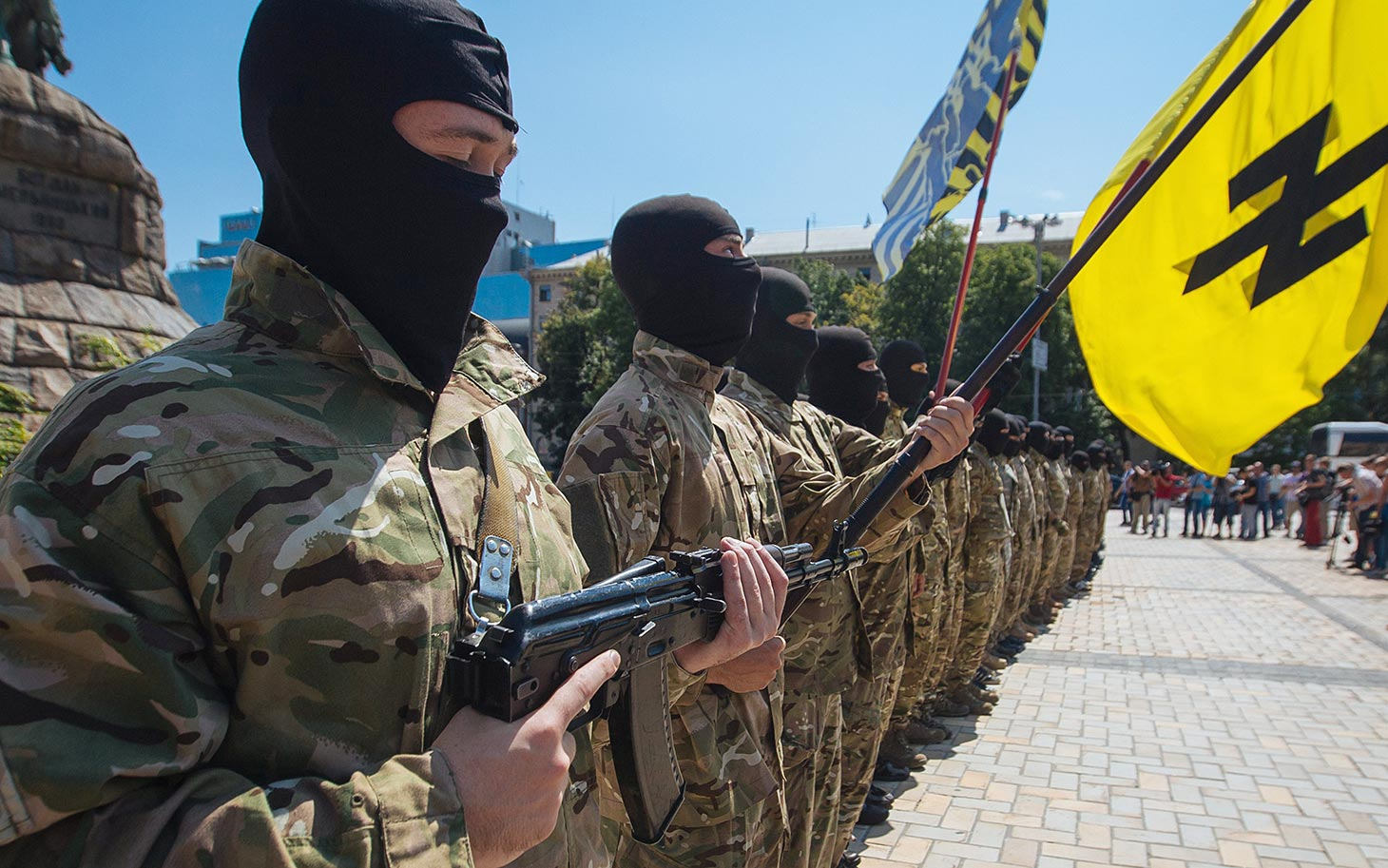
Once Yanukovich had been overthrown, Crimea seceded peacefully in March 2014 – not a shot was fired as the peninsula was taken over - and the Donbass tried to follow suit. Lugansk and Donetsk were brutally attacked by Kiev forces, with the help of hundreds of American mercenaries and neo-Nazi militia like the Azov brigade.
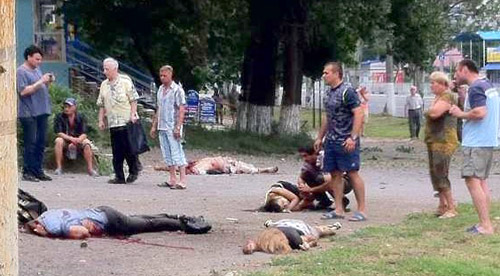
Donetsk airport, which was brand new having been re-built for the Euro 2012 football tournament, was reduced to rubble. The bombing of the Donbass continued without interruption until 2022, causing thousands of casualties, until the Russians invaded in 2022 to put a stop to it.
In 2014, the USA not only sent mercenaries to help Ukrainian forces re-take the Donbass, the CIA also established a dozen bases on the Russian border, turning Ukraine into a beachhead against Russia. This was finally admitted by the New York Times last week: the mainstream media habitually reports things many years after they are known by others, in this case to show the CIA up in a good light in the context of the current war.
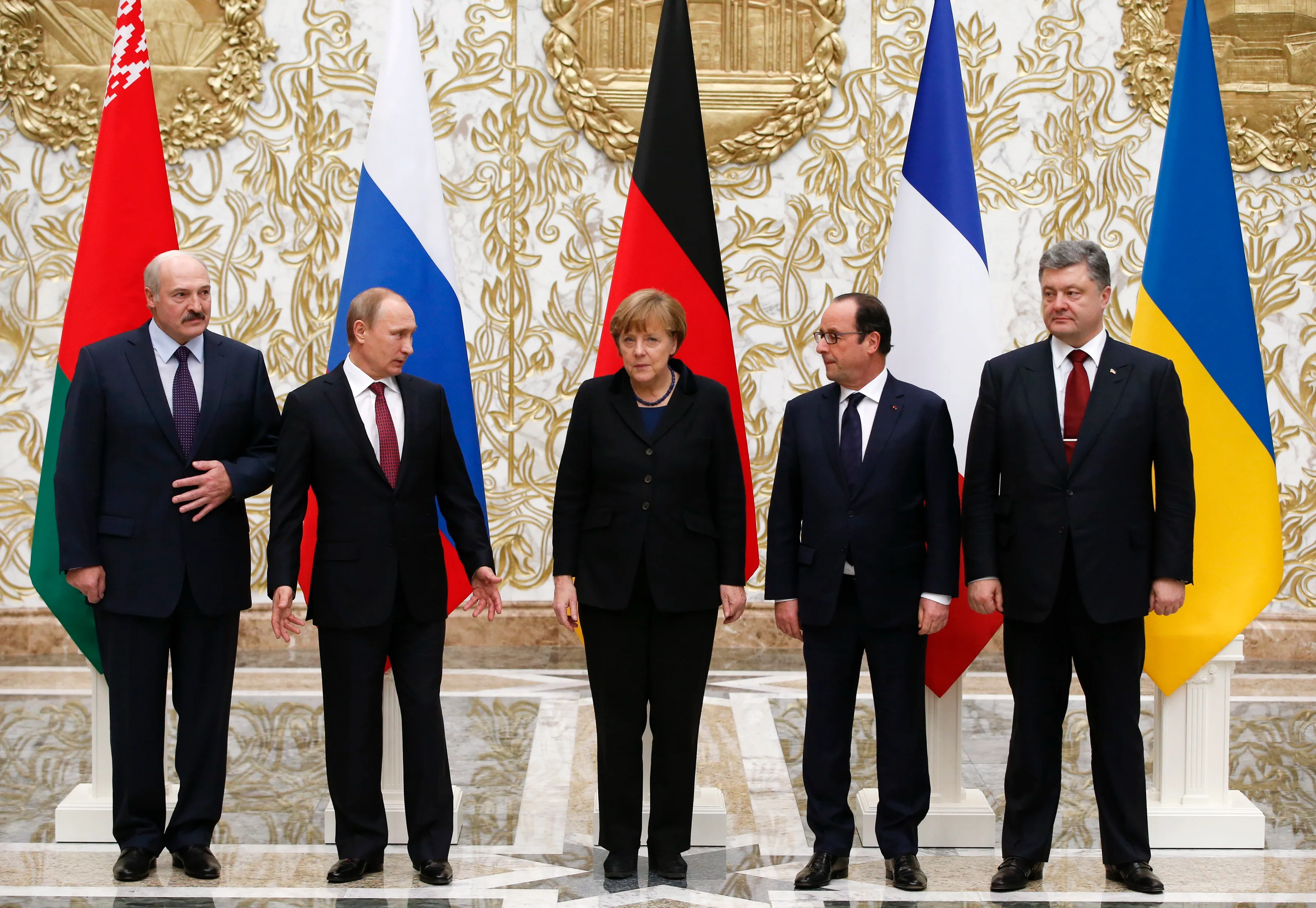
Europe continued to provide cover for this American expansionism. In 2014 and 2015, France and Germany sponsored the Minsk agreements. These required Ukraine to grant autonomy to the Donbass. For eight years, the EU accused Russia of not respecting them but the text contains no obligations on Russia at all: Russia is not even mentioned. In 2022, Angela Merkel and François Hollande admitted that they had sponsored those agreements only to give Ukraine time to rearm: they were not, in fact, intended to produce a lasting peace at all. Pure cynicism.
That the Minsk agreements were nothing but a means for gaining time became clear after Donald Trump was overthrown in January 2021. First Britain and then the USA signed new military agreements with Ukraine in June, August and November 2021. The last of these explicitly committed the US to helping Ukraine rearm with a view to retaking Crimea. Given that this meant that Ukraine was gearing up to retake the territories it lost in 2014, it is impossible to pretend that the 2022 invasion was unprovoked. It was pre-emptive.
In all these dates and counter-dates, one thing is clear: it is surely no coincidence that Russia chose 21 February 2022 to recognise the Donbass republics, who then duly invited Russia to help them militarily. 21 February 2014 was, as we have seen, the date of Yanukovich’s overthrow. The Russian Special Military Operation was timed to be a symbolic reversal of Maidan and therefore specifically to destroy the Western pretence to embody universal values and international order.
The invasion is an attempt to put an end to at least fifteen years of aggressive Eastwards expansionism by the West, whose ultimate goal was to provoke at least regime change in Russia and, at best, the dismemberment of the Russian state itself. As the Polish president told French TV on 26 February 2024, “For Poland, it would be better if Russia did not exist.”